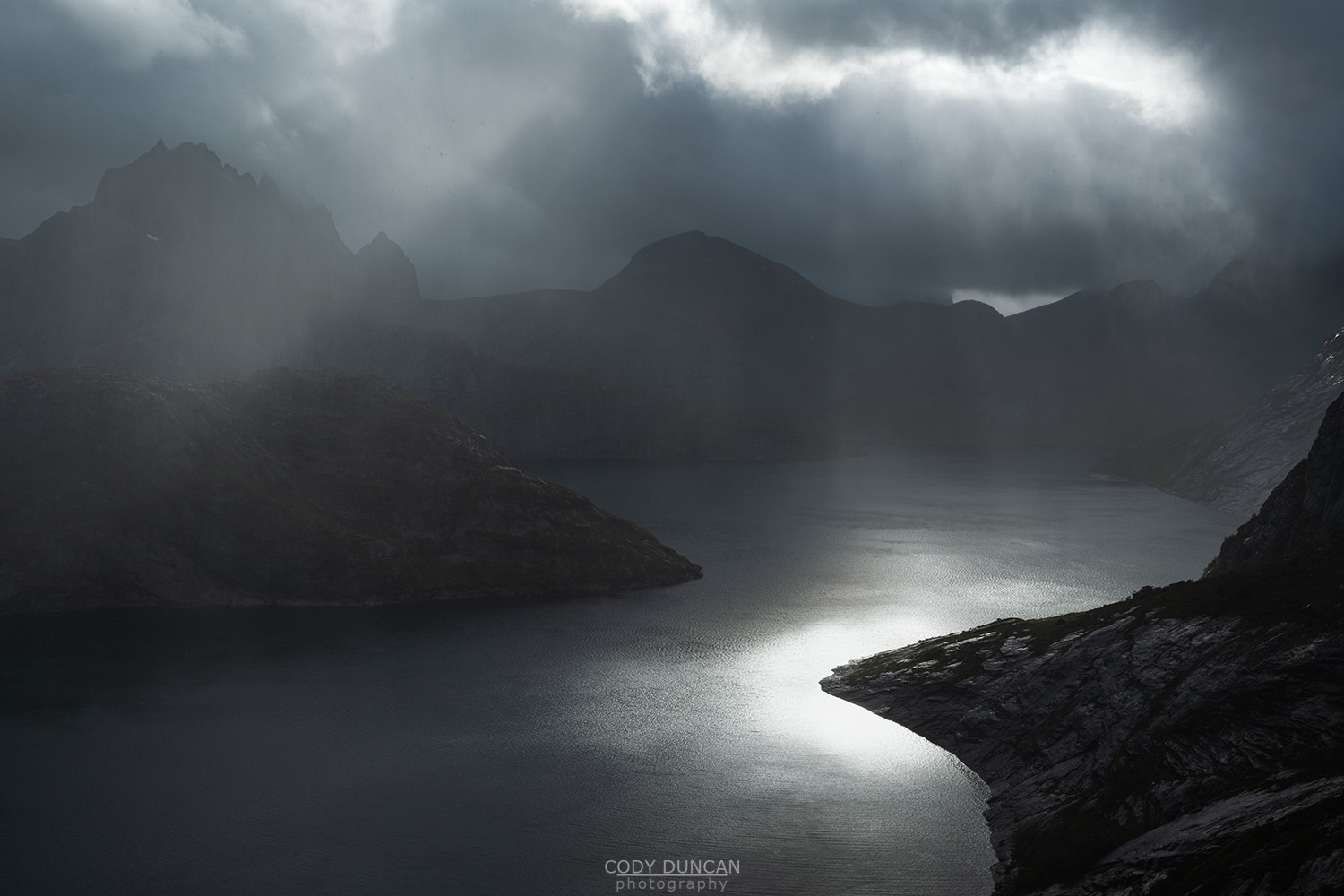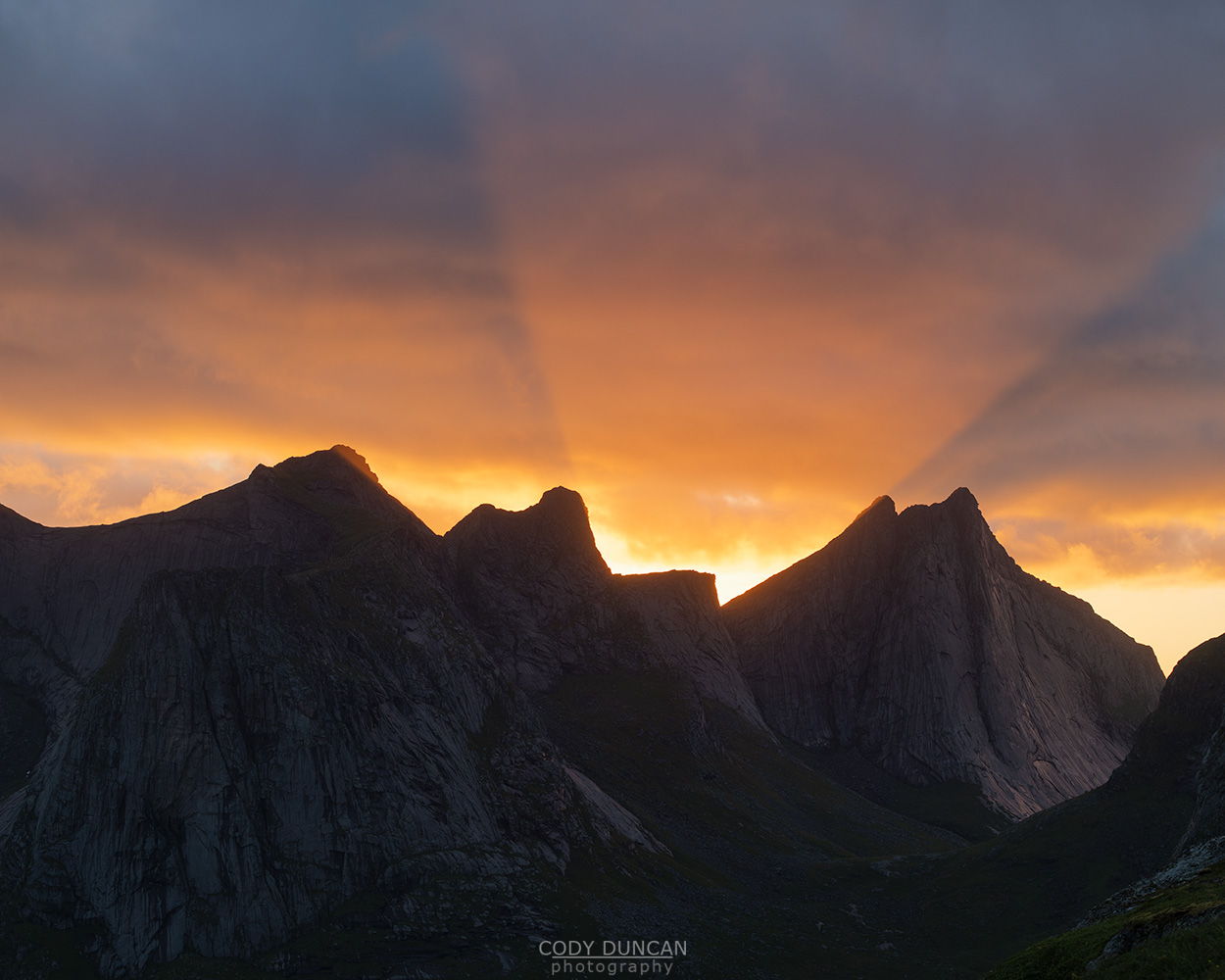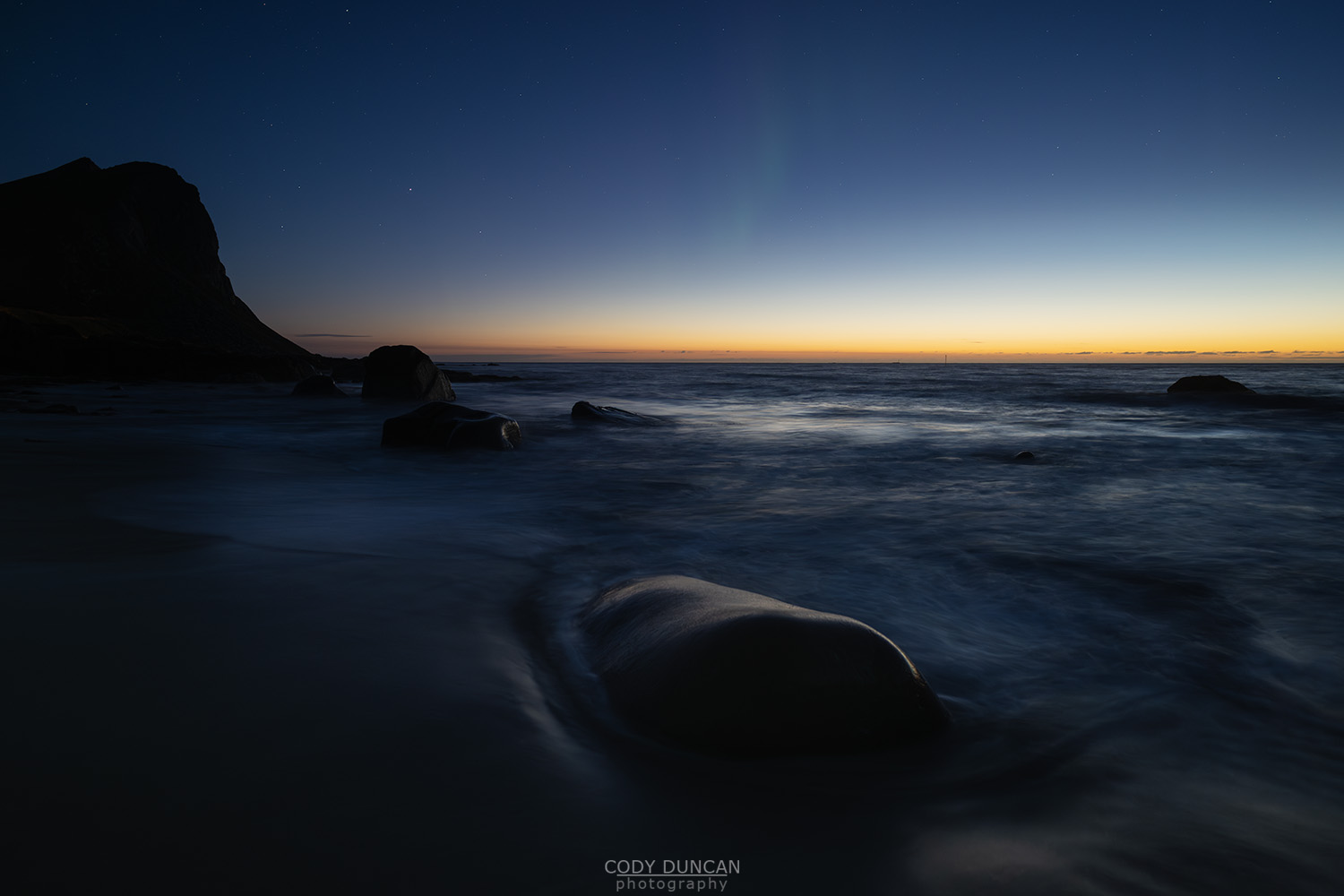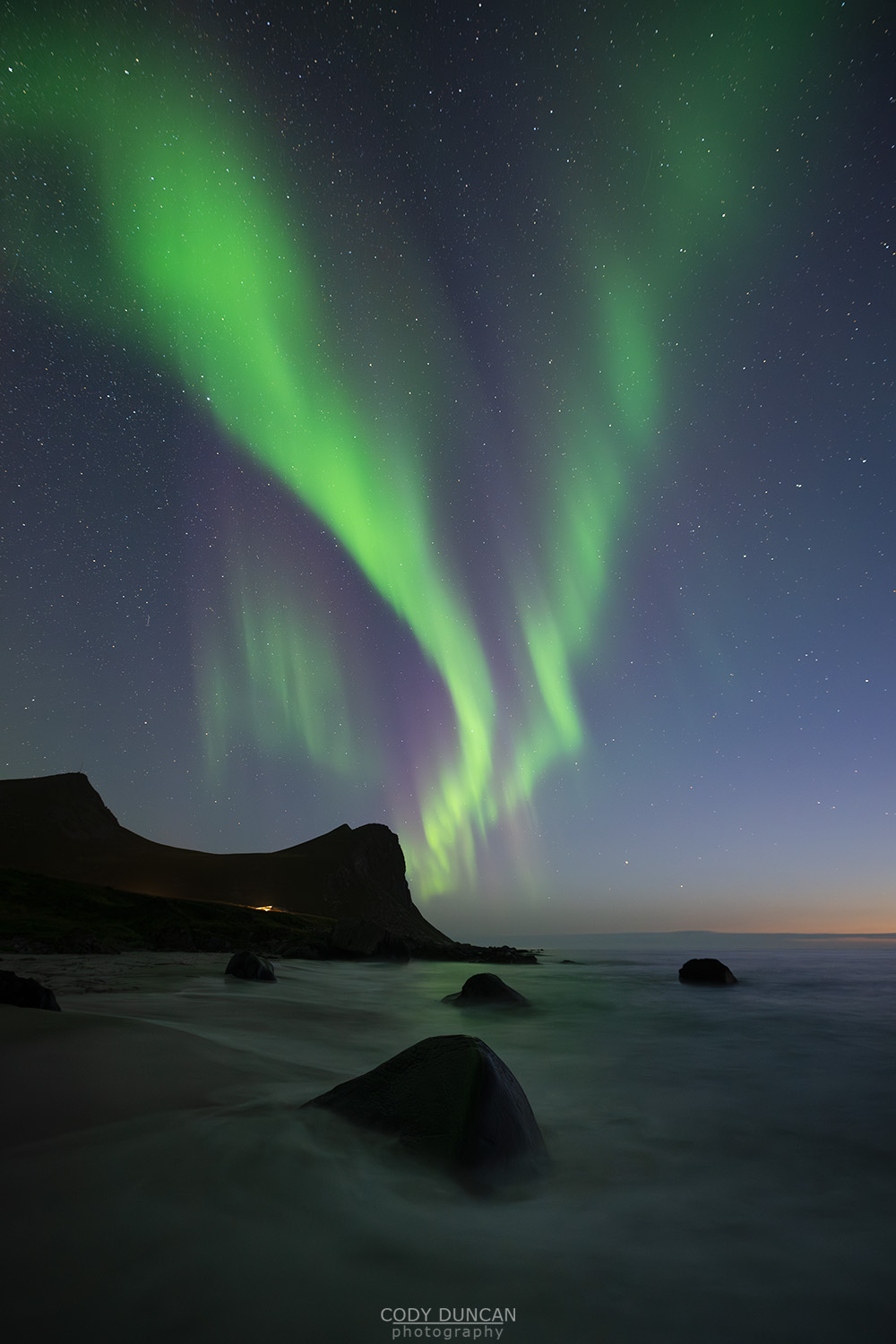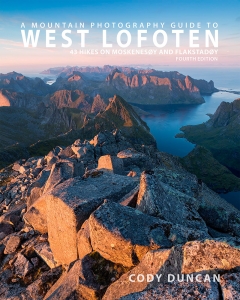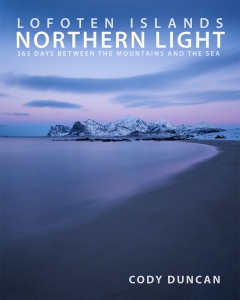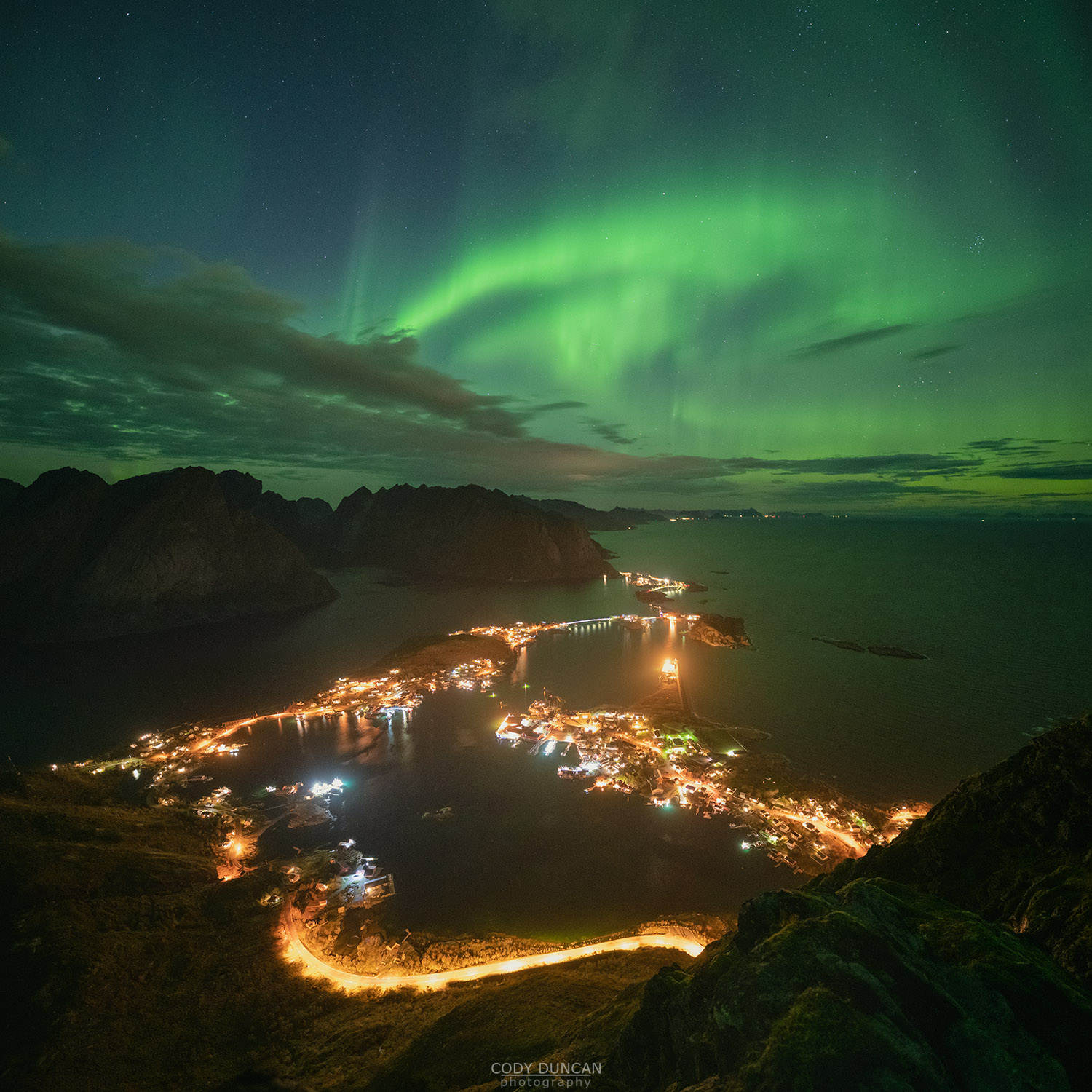
Photo: Northern lights over Reine from Reinebringen, Moskenesøy, Lofoten Islands, Norway. September 27, 2020. 22:32
The Midnight sun season on Lofoten often gets the recognition for insomnia and sleepless nights among visitors. But once the sun sets in the north, the sleepless nights continue, but for a different reason: Northern Lights. If I actually think about it, being a photographer in Lofoten means pretty terrible sleep patterns throughout the year – and mostly just staying up quite late, regardless of if it’s winter or summer.
On this particular evening, all the date was looking promising for a decent aurora and so I decided to head to Reine and hike up Reinebringen. I’ve made several unsuccessful attempts over the years, but at least with the Sherpa stairs having been mostly completed by this point in 2020, the mountain was much easier to ascend/descend in the darkness – and now that the stairs are fully completed, its even easier.
As evening progressed and I could see the first aurora, I could also see a lay of clouds approaching. And while I was able to get some ok compositions, the clouds eventually came in and blocked out the best of the evening’s aurora.
Compositionally, it is also quite a difficult location for northern lights, especially when they are in the more easter and southern part of the sky. I would have perhaps been better with a slightly less active aurora closer to the horizon so I could look more north. In the case of this image though, it is two images, a lower and an upper, both at 14mm, to get both the city and the northern lights in the image. A single image alone would not have worked under these conditions and I would have missed too much of the sky or foreground.
Camera Info:
Nikon D850
Sigma 14mm f/1.8
14mm
ISO 2000
f2
2 Seconds
WB Daylight

